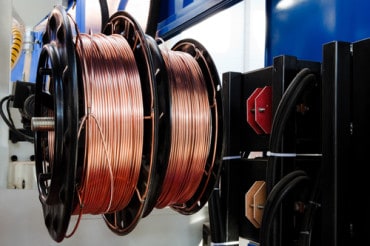
CDOS is not just a technological shift but a new way of thinking about vehicle engineering. As EVs become more complex, software-driven, and reliant on system-wide optimization, CDOS will be indispensable for automakers seeking to innovate quickly and efficiently.
The growing international market for electric vehicles (EVs) has brought forth a new wave of challenges in design and engineering. Unlike internal combustion engine (ICE) vehicles, where components could be developed independently and integrated later, EVs require a more holistic approach. To optimize factors like range, comfort, and performance, automakers and suppliers must embrace Comprehensive Design and Optimization Simulation (CDOS), a system-wide methodology that ensures seamless integration of all components and subsystems.
In an exclusive conversation with Steven Dom, Automotive Industry Solutions Director, and Piyush Karkare, Automotive and Transportation Solution Director at Siemens, RTInsights explored how CDOS is transforming EV development, its advantages over traditional methods like CAD and Digital Twin technologies, and Siemens’ role in driving this innovation.
What is Comprehensive Design and Optimization Simulation (CDOS)?
To put the potential role CDOS can play into perspective, it is important to properly understand what it is and what it does.
CDOS is a holistic approach to vehicle design, ensuring all elements—from the vehicle level down to individual components—are optimized to work together. Traditional simulation techniques often focus on isolated components, but CDOS ensures that all subsystems integrate efficiently to achieve an optimal balance of performance, efficiency, and durability.
Building on that thought, Karkare noted: “Comprehensive design and optimization looks at vehicle design as a whole in terms of balancing three main things that are needed for EVs, like range, comfort, and performance, all the way from the vehicle level down to the component level.”
For example, an EV’s thermal management is not just about cooling an electric drive unit but also ensuring that the battery and passenger cabin are regulated efficiently. If a cooling system is optimized in isolation for one component, it may inadvertently compromise another, such as the battery’s thermal management or the passenger’s climate control. CDOS prevents such inefficiencies by enabling engineers to evaluate the entire vehicle system at every stage of development.
Dom noted an example with Internal Combustion Engine (ICE) cars that highlights the need for an entire vehicle approach. For instance, in an ICE vehicle, a car’s complete integrated energy analysis might say that an alternator will work well in a certain range. Without taking a CDOS approach, an automaker might optimize just the alternator or look for the best possible alternator to put in its car. By focusing on that one component, the automaker might select an alternator with very high peak performance, say 95%. However, when installed and operating in an actual vehicle, they may find that it only performs at 80%. The reality is that a cheaper alternator, which didn’t have that 95% peak performance, might perform better in the vehicle.
As such, CDOS’s strength in all types of vehicles is its ability to consider this integrated approach. So, elements that traditionally were designed and optimized as separate entities are now considered from a perspective of how those elements will work in conjunction with everything else in an EV.
How CDOS Differs from Traditional Tools Like CAD and Digital Twin
Electric vehicles (EVs) present new challenges in that the design and use of any part must take into account how that element interacts and integrates with every other element in the car. As such, designers and engineers need tools that give them a system-wide view of their work rather than a component. That need has raised interest in using CDOS.
That is a departure from the norm. Automakers typically rely on CAD, Digital Twins, and similar technologies to develop their cars. CAD tools primarily deal with individual parts, offering structural and geometric insights. Digital Twins aim to replicate real-world products in a virtual environment but often lack the multi-disciplinary integration that CDOS provides.
To that point, a key challenge in traditional engineering is data traceability, collaboration, and model reuse. With CDOS, Siemens ensures that all stakeholders—from design to manufacturing—work in a unified environment, enabling seamless decision-making and reducing inefficiencies in EV development.
CDOS integrates mechanical, electrical, and software components into a single, traceable, and collaborative system, ensuring that all elements contribute effectively to the vehicle’s overall performance.
In particular, Karkare noted that CDOS helps EV automakers focus on and address a couple of things.
“One is traceability of data in terms of what you’re doing, more importantly, why you’re doing it, and with what data you’re doing it,” said Karkare.
A second aspect addresses the need for greater collaboration when designing and engineering EVs. Many different people and disciplines are involved, and these stakeholders need to know how the decisions of others impact the elements of an EV.
“It is clear that there is a need for a multi-disciplinary approach to optimization,” said Dom. Every component-level analysis needs to be driven from an integration perspective.
See also: Rate of EV Innovation Requires Compressed Development Timelines
Bottom line: CDOS is Critical for EV Engineering
EVs demand a fundamental rethink of vehicle design and engineering. Traditional ICE vehicles follow standardized architectures (e.g., front-wheel drive, rear-wheel drive). However, EVs introduce entirely new design paradigms, such as battery integration into the vehicle structure, power electronics, and software-driven controls.
EVs require comprehensive design optimization. “We are not just talking about the mechanical side of it,” said Karkare. “We’re talking about all kinds of things, such as electrical optimizations, electronics, and chip level, where you have a lot of software driving these vehicles nowadays.”
For example, when selecting a processing unit, it must deliver the requisite performance from a real-time processing perspective, and the chip’s power consumption must also be considered.
CDOS helps a designer or engineer look at such issues and more. It is particularly useful in areas such as:
- Battery Thermal Management – Preventing thermal runaway events that can lead to overheating or fires is crucial for safety and brand reputation.
- Software-Hardware Co-Design – Ensuring that processing units, electronics, and software work harmoniously to optimize real-time performance and energy consumption.
- Multi-Domain Optimization – Considering how powertrain, aerodynamics, and energy consumption interact rather than treating them as separate problems.
Dom noted that taking these and other issues into account extends beyond the automaker itself. The need for a system-wide view changes the way automakers work with their suppliers. For example, suppliers develop a lot of electric drive systems because they are not part of the core development of car OEMs, and this changes a lot.
“It changes how people and organizations need to work together,” said Dom. He noted that one need only look at the electric drive and thermal management. An electric drive might be developed by supplier A, the HVAC system by supplier B, the battery comes from supplier C, and all these things must work together optimally.
As a result, automakers find that their ecosystem of partners is changing. They must all work together in an integrated way. The holistic approach of CDOS enables such collaboration while also reducing development time, preventing costly design errors, and enhancing EV safety and efficiency.
Siemens as Your CDOS Technology Partner
Siemens plays a pivotal role in helping automakers implement CDOS, leveraging its powerful Siemens Xcelerator portfolio. This comprehensive suite of tools allows multi-domain co-design, enabling seamless collaboration between mechanical, electrical, and software engineers.
Some key advantages Siemens brings to CDOS include:
- AI-driven simulations that reduce computational time from days to minutes, accelerating design cycles.
- Integration of hardware and software development, ensuring that vehicle control systems and power electronics function optimally.
- Openness and interoperability, allowing customers to integrate Siemens solutions with third-party tools without disrupting workflows.
- Virtual manufacturing simulations, allowing automakers to test production line efficiency before physical implementation.
As companies race to shorten EV development cycles from 54 months to 18 months, Siemens’ CDOS solutions provide the necessary agility and innovation speed to stay competitive.
An additional point to consider is the openness of Siemens solutions. As noted above, collaboration between automakers and their key suppliers is increasingly important with EVs. By being open, Siemens can integrate with tools from other vendors. In doing so, efficient collaboration is enabled.
Real-World Applications: How Siemens is Solving CDOS Challenges
Several leading EV manufacturers and suppliers have adopted Siemens’ CDOS methodology to optimize their designs and manufacturing processes:
- Energica Motors and eMotors – Leveraging Siemens Xcelerator for multi-attribute balancing in their EV designs.
- Mercedes-Benz and Hyundai – Utilizing Siemens’ simulation tools to optimize EV performance and manufacturability.
- Denso – A key supplier using Siemens’ CDOS principles to ensure seamless integration of EV subsystems.
One notable challenge Siemens helped solve involved supplier collaboration. Many EV components, such as HVAC systems and batteries, come from different vendors who may be competitors. Siemens’ tools allow OEMs to integrate these components without exposing proprietary data, ensuring smooth and secure cross-company collaboration.
Additionally, virtual factory simulations have enabled manufacturers to identify production bottlenecks before physical implementation, saving millions in operational costs.
The Future of EV Engineering with CDOS
For automakers looking to reduce time-to-market, improve efficiency, and ensure long-term reliability, CDOS is the future.
CDOS is not just a technological shift but a new way of thinking about vehicle engineering. As EVs become more complex, software-driven, and reliant on system-wide optimization, CDOS will be indispensable for automakers seeking to innovate quickly and efficiently.
Siemens offers cutting-edge simulation, AI-driven optimization, and seamless integration tools. Together, these solutions will help automakers design future EVs faster, smarter, and more collaboratively than ever before.






